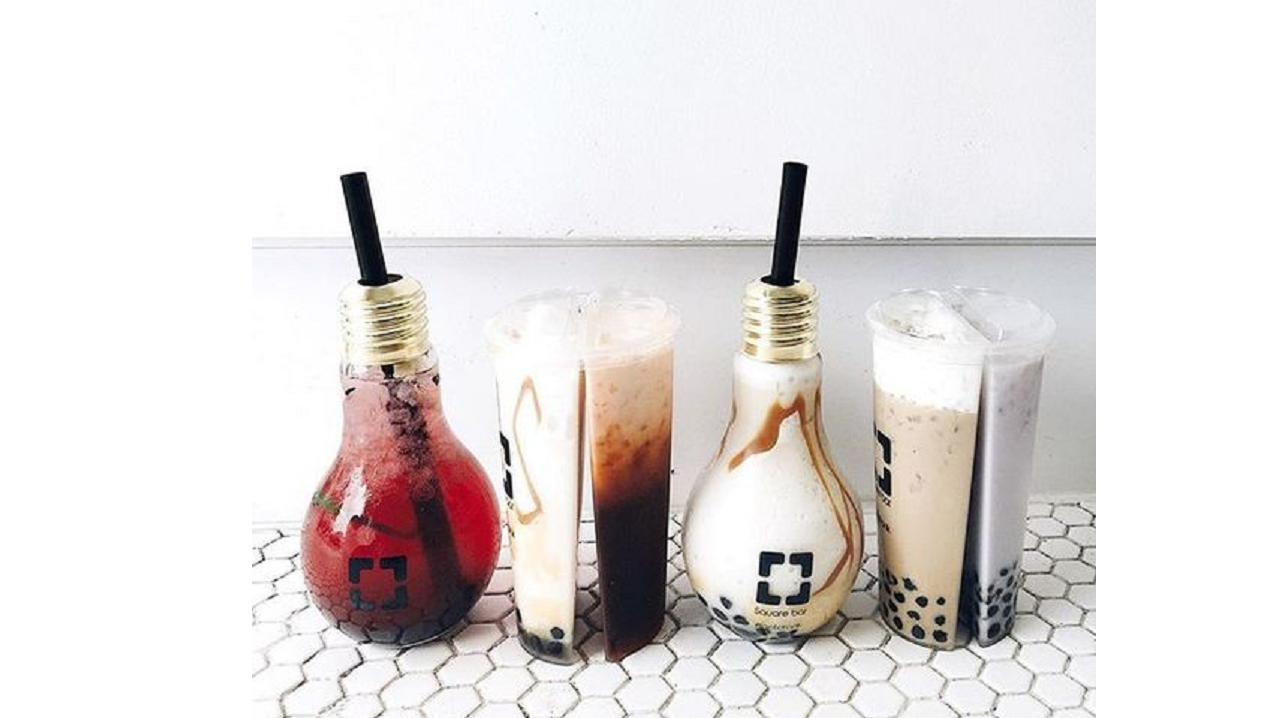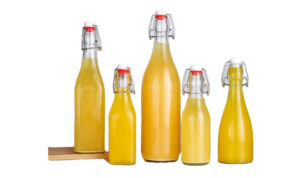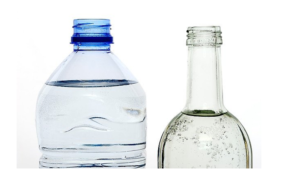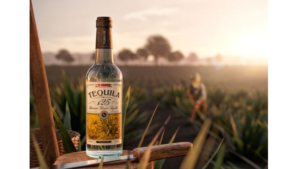Rely on our expertise, experience in glass production, we are the leading glass bottle manufacturers, producing quality glass packaging for milk tea, bubble tea. Customize bottles with various surface decorations.
What is Bubble Tea?
Bubble tea is a Taiwanese tea-based beverage that goes by names such as, milk tea, pearl tea, tapioca tea, boba tea, boba nai cha, foam milk tea, and several others.
Started from 1980s, the exact story on who invented Bubble Tea is somewhat debated, however, it is believed that Ms. Lin Hsiu Hui of the Chun Shui Tang Tea Shop in Taichung, Taiwan, came up with the drink when she randomly poured fen yuan into her iced tea during a meeting in 1988.
Fast forward three decades and this discovery of milk tea mixed with tapioca balls as evolved into hundreds of different, fun and unique bubble tea flavor combinations. Most bubble teas are made with black tea, green tea, or oolong tea. Black Tea (or red tea, as it is known in China, Hong Kong, and Taiwan) – By far, black tea, especially Earl Grey, is the most popular option for bubble tea. Green Tea – Especially jasmine green tea and green tea powders such as matcha.
Are You Bubble Tea Fans?
Nowadays, more and more people love to take a cup of bubble tea drinks, from students to yong boyfriend & girlfriend, even those old aged people. They love bubble tea, even addicted to bubble tea. Thanks to those people, bubble tea shops are seemingly everywhere these days and the color varieties, thanks to all the different flavors seem to keep getting cooler and cooler.
Are you a bubble tea guy? Have you ever wated to learn how to make your favored bubble tea at home?
Whether you’re new to bubble tea, or you drink it all the time, you are going to know how to make bubble tea at the most basic level- strong black tea, sugar, milk, and tapioca balls. After all, I highly doubt most of us would know what to do with all the different flavors, chewy (or QQ) additives, or multiple kinds of milk. But, you can read more about the different types of bubble tea here.
Now, let’s start our bubble tea process!
1—What is Boba?
Boba, often synonymous with bubble tea, are actually the little black balls that sink to the bottom of your bubble tea.
Boba is made from partially cooked tapioca flour- the refined starch extracted from the cassava root. Boba is gluten-free and, in its natural state, flavorless. Loved for its chewy texture, Boba can be added to both hot and cold drinks including hot teas or smoothies.
2—Ingredients in Bubble Tea
As I mentioned above, this is bubble tea at its most basic. There are actually several reasons why I love this version more than any other
It isn’t too sweet. If you’ve ever been to a bubble tea shop you may have discovered that bubble tea can get super sweet, super fast. While the first sip may taste wonderful, much more and I feel sick the rest of the day.
The ingredients are simple. Aside from the boba, you probably have everything else you need to make bubble tea right from the comfort of your very own home.
It’s ready fast. The longest part of the whole process is making the tea and waiting for it to cool.
So what are these super simple ingredients?
(1) | Tea.
For this bubble tea recipe, I used a simple Black Tea. High in caffeine, it’s what I had on hand and it worked perfectly. Oolong tea would also work nicely, or any other robust black tea. Don’t worry about over-steeping your tea since you will be adding milk (or cream) and some sugar.
(2) | Milk.
I like to use whole milk or half-and-half whenever I make this bubble tea recipe. Heavy cream is too heavy and low-fat milk doesn’t quite add enough creaminess that milk tea should have. Dairy milk and creamer, or full-fat coconut milk are my top picks, but other plant-based milk alternatives (soy, almond, walnut) will work, too.
(3)| Sweetener.
The benefit of making bubble tea at home is that you can add as much or as little sugar as you like. The total amount will vary depending on the type of milk you use, how long you steep your tea, and, most of all, personal preference. In this recipe, I used granulated white sugar, but simple syrup, honey, or agave would also work.
(4)| Ice.
Of course, these days bubble tea may come either hot or cold. However, in this case, you’ll need ice. Depending on how cool your tea gets will determine how much ice you’ll need.
(5)| Tapioca Pearls.
Finally, Boba. This is the boba that I used to make this bubble tea recipe. It is the fast-cooking kind, which means that they don’t take over an hour to cook. In fact, they take just 5-10 minutes. There is one very important thing to note about quick-cooking tapioca pearls- do not make them ahead of time. You will notice that after just 1-2 hours that they will start to stiffen and dry out.
How to make Bubble Tea
Now that we know all about bubble tea and boba and a brief history about how this unique Taiwanese drink came to be, let’s learn how to make one ourselves.
(1 )| Prepare the tea first.
The first thing you want to do, before you do anything else, is prepare the tea. You don’t need fancy or expensive black tea. However, you do want a very strong black tea.
To accomplish this, bring approximately 6 cups of water just to a boil. Remove from heat and add your tea bags and granulated sugar (if using). For this recipe, I added approximately 1 tablespoon of sugar per glass of bubble tea. Feel free to add more or less to suit your own personal taste and preference.
Allow your tea so steep and come to room temperature.
If you’re worried about time and you want your bubble tea as soon as possible you may either prepare the black tea ahead of time or transfer the steeping tea to the refrigerator to speed up the cooling process. That said, you want to let your tea steep for at least 15-25 minutes.
Remember strong tea is a good thing when it comes to bubble tea.
(2) | Prepare the Boba (tapioca pearls).
Since we’re using the quick-cooking tapioca pearls, there’s no need to make them ahead of time. In fact, you don’t want to make them ahead of time otherwise you risk them drying out and stiffening.
So, approximately 15 minutes before you plan to serve your bubble tea, bring a small pot of water to a boil. Add the boba and stir well to prevent them from clumping and sticking together. Allow the boba to cook for approximately 5-7 minutes.
They should be floating on the surface and super chewy.
Drain and rinse under cold water – don’t worry, they won’t fall apart. You may transfer them back to the original pot or to a clean serving bowl.
(3) | Assemble your Bubble Tea.
Grab four glasses (any glass will work, just make sure they’re large enough to hold approximately 2 cups or so) and divide the cooked boba between them. Fill each glass with ice and pour approximately 1 – 1 1/2 cups room temperature black tea into each. Add approximately 2-3 (or more) tablespoons of milk or half-and-half to each glass and stir well to combine.
Tips and Tricks
First and foremost, be safe. Tapioca balls, while fun to chew, are also a choking hazard. Especially for kids. As such, I recommend serving with both a reusable straw and a long spoon which can scoop out all those delicious boba balls.
This bubble tea recipe is best enjoyed as soon as possible, or, at the very least on the same day.
If you want an extra cold bubble tea, combine the milk, tea, and a few ice cubes (but not the boba!) in a cocktail shaker. Shake vigorously and pour into a glass filled with boba and ice. This is actually the more “traditional” way of making bubble tea (shaking, rather than stirring, that is).
Have fun with other teas like matcha, green tea, or Thai Tea.
Bubble Tea Frequently Asked Questions
1 | Is bubble tea healthy?
Unfortunately, there is no yes or no answer to this question. So, in an attempt to make things a little easier for us all, I’m going to break down the good and the bad about bubble tea.
The good. Tea! at least the unmolested, natural kind, like the black tea I used in this bubble tea recipe. Also good? milk and other low-sugar plant-based milk alternatives.
The bad. The crazy amounts of sugar. According to Livestrong, one serving “may contain as much as 1/2 cup of cooked tapioca pearls, 1/4 cup sugar and 1/8 cup sweetened condensed milk”. Many of the mixes may also contain artificial ingredients and coloring.
Up for debate. Tapioca pearls. Aside from tapioca being what is considered an “empty” source of energy, some research now claims that these tapioca pearls contain trace amounts of polychlorinated biphenyls (PCBs) such as styrene, acetophenone and brominated compound. You guys, as with all claims take it for what it is until it is proven 100% accurate.
As a self-proclaimed “balanced foodie” I will continue to enjoy a glass of bubble tea every once in a while. Do I recommend drinking one filled with heavy cream and sugar every single day? Probably not.
(2) | What is popping boba?
Popping Boba is completely different from traditional Boba. Popping Boba, unlike traditional boba, is NOT made from tapioca.
Instead, popping boba is made using a process that uses sodium alginate and either calcium chloride or calcium glucate lactate to shape a liquid into squishy spheres. This process is known as Spherification and the result squishy spheres that result look like roe (fully ripe internal egg masses in the ovaries).
Ingredients for passion fruit popping boba (as an example) include water, sugar, passion fruit juice, calcium lactate, seaweed extract, malic acid, FD&C yellow, passion fruit flavor, potassium sorbate.




